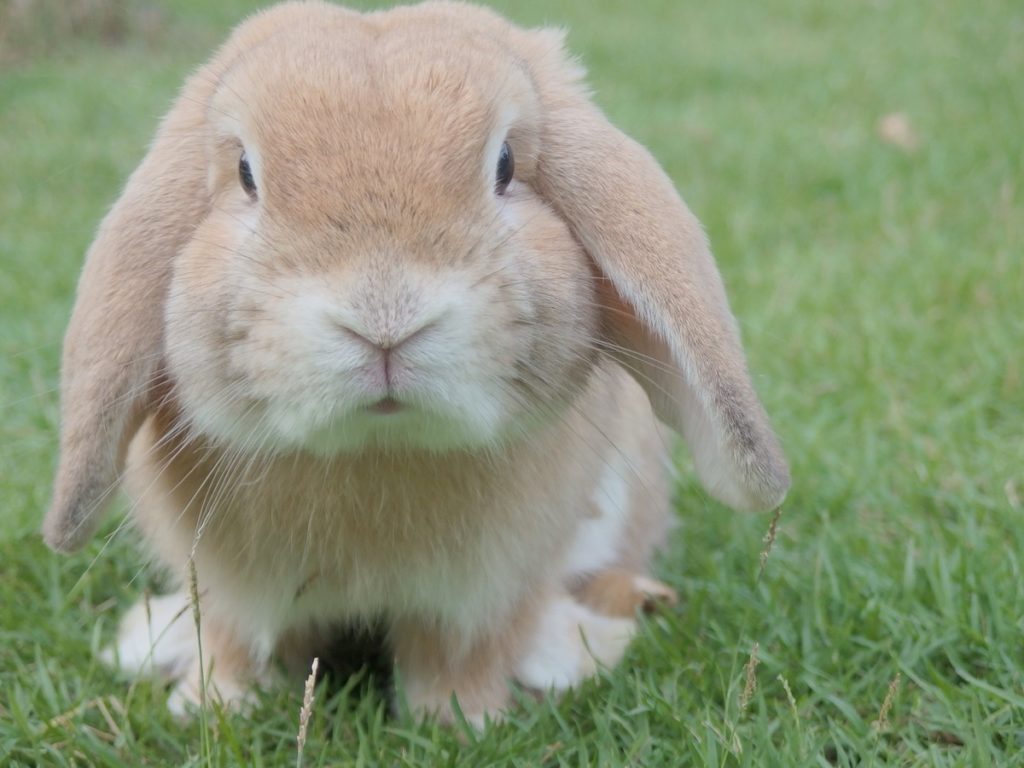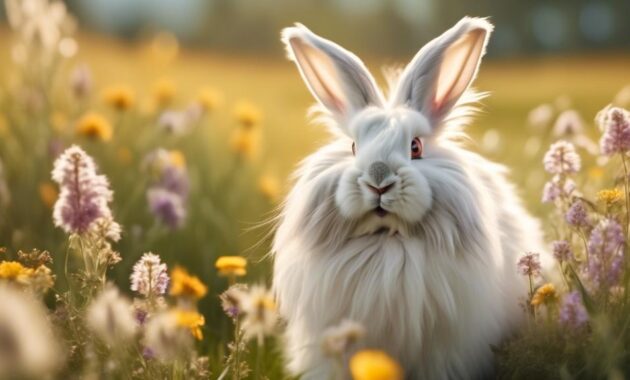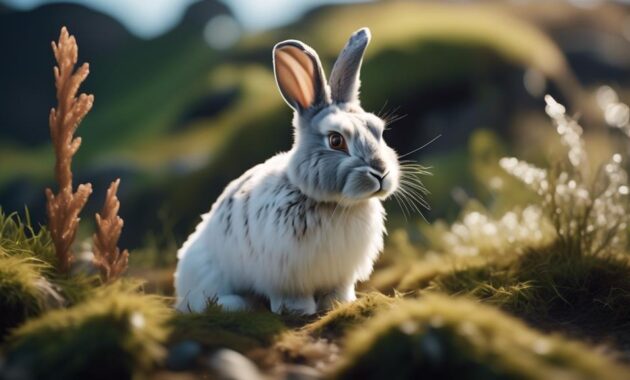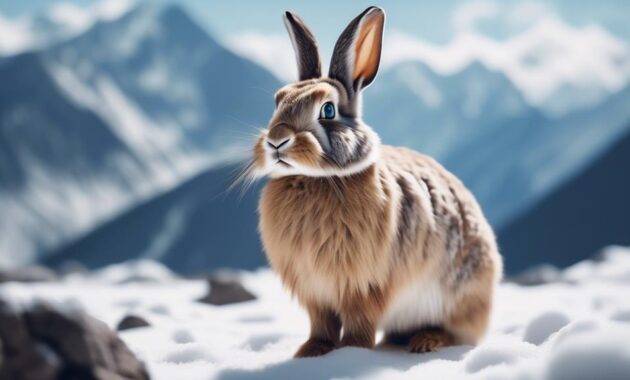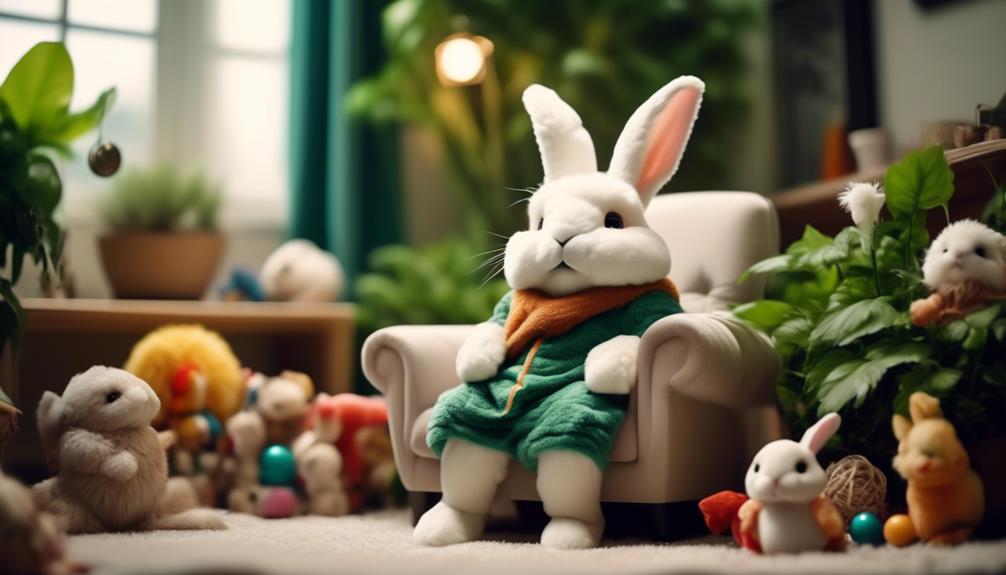
Are you searching for the perfect pet, a companion that will bring joy and warmth into your life? Look no further than the adorable Dwarf Hotot rabbits. With their compact bodies and coats as shiny as polished marble, these little creatures are like tiny bundles of happiness.
But there’s more to these rabbits than just their cuteness. They have a fascinating history, a charming temperament, and a variety of coat colors that will leave you mesmerized.
So, are you ready to discover why Dwarf Hotots are considered the perfect pet? Let’s dive in and explore their captivating world together.
Key Takeaways
- Dwarf Hotot rabbits are small in size, weighing between 2.5-3.5 lb, and have a compact body shape with a short, dense, and shiny coat.
- They were developed in France and Germany by crossing breeds with Hotot, and were first developed in France in the 20th century. They were brought to the United States in 1970 and recognized by the American Rabbit Breeders Association in 1983.
- Dwarf Hotot rabbits have a playful and energetic nature, with a sweet and affectionate disposition. They form strong bonds with their human companions and enjoy being cuddled and spending time with them.
- The coat colors of show-worthy Dwarf Hotot rabbits are all-white with a black ring around the eyes, although some may have Dutch marked or English Spotted coats. Their coats require minimal attention, but seasonal molting may require increased brushing. Additionally, their coat colors do not affect their temperament or health.
Physical Characteristics
What are the physical characteristics of Dwarf Hotot rabbits?
- Dwarf Hotot rabbits have a weight range of 2.5-3.5 lb and a lifespan of 7-10 years.
- They’re small in size, with a compact body shape.
- Their coat is short, dense, and shiny.
Developed in France by Baroness Bernard in the 20th century, the breed was later bred in Germany in the 1970s to create the dwarf variety.
- Dwarf Hotots were brought to the United States in 1970 by Elizabeth Forstinger and were recognized by the American Rabbit Breeders Association in 1983.
In terms of temperament, they’re known to be playful, sweet, affectionate, and energetic.
- Show-worthy Dwarf Hotots have an all-white coat with a black ring around their eyes, about an inch thick.
- Some may have Dutch marked or English Spotted coats.
Their coats require minimal attention, with seasonal molting requiring increased brushing to prevent hair ingestion complications.
For care requirements, they need a small cage with a solid bottom or rabbit-safe bedding, and it isn’t recommended to keep them as outdoor rabbits.
- Their enclosure should be their ‘room’ while the home serves as their main habitat.
- Daily spot-cleaning and weekly complete bedding replacement are necessary.
Their diet should consist of 70% hay, a quarter cup of pellets per day, and rabbit-safe leafy greens, fruits, and vegetables.
Breed History and Origin
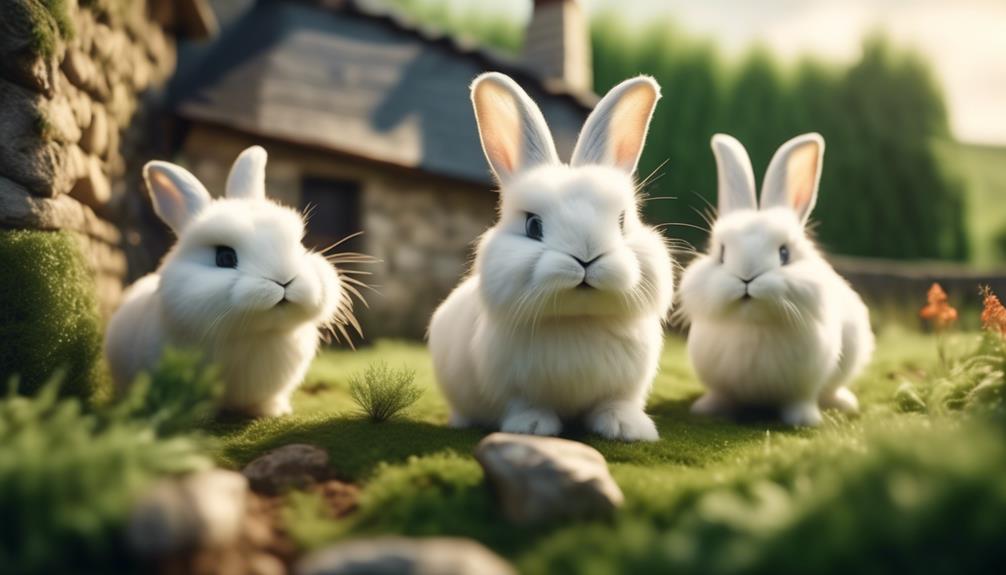
Dwarf Hotot rabbits were developed by crossing breeds with the normal-sized Hotot and were first developed in France by Baroness Bernard in the 20th century.
Here are four interesting facts about the breed’s history and origin:
- The dwarf variety of Hotot rabbits was bred in Germany in the 1970s, where they were specifically selected for their small size and distinctive markings.
- In 1970, Elizabeth Forstinger brought the breed to the United States, where they quickly gained popularity among rabbit enthusiasts.
- The American Rabbit Breeders Association officially recognized the Dwarf Hotot breed in 1983, solidifying its status as a distinct and recognized breed.
- Today, Dwarf Hotots are cherished for their unique appearance and delightful personalities, making them a beloved pet choice for many rabbit lovers around the world.
Temperament
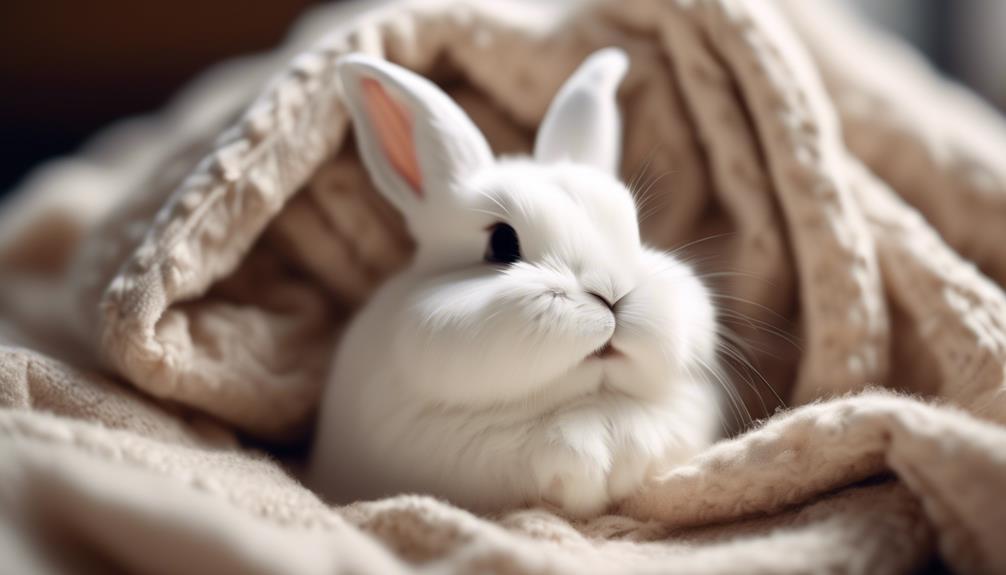
After learning about the fascinating history and origin of Dwarf Hotot rabbits, it’s time to explore their delightful temperament.
These adorable bunnies have a playful and energetic nature that will bring joy to your life.
Dwarf Hotots are known for their sweet and affectionate disposition, quickly forming strong bonds with their human companions.
They love to be cuddled and enjoy spending time with you, making them the perfect pet for those seeking companionship.
Their energetic nature means they’ll keep you entertained with their antics and playful behavior.
With their delightful temperament, Dwarf Hotot rabbits are sure to bring happiness and love into your home.
Coat Colors
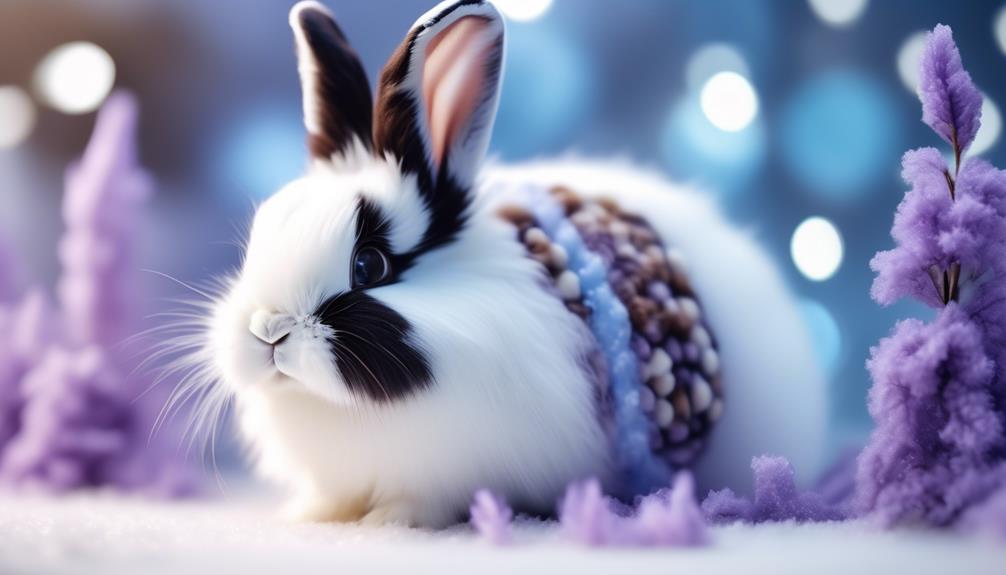
The coat colors of Dwarf Hotot rabbits vary, with show-worthy rabbits typically being all white with a ring of black around their eyes. Dwarf Hotots with the classic black ring around their eyes are highly sought after in the show ring. However, variations in coat colors can also be found, adding uniqueness to each individual rabbit.
Here are some interesting facts about the coat colors of Dwarf Hotots:
- Black band around the eyes should be about an inch thick.
- Some Dwarf Hotots may have Dutch marked or English Spotted coats.
- Coats don’t require much attention and have seasonal molting.
- Molting season requires increased brushing to prevent hair ingestion complications.
It’s important to note that the coat colors of Dwarf Hotots don’t affect their temperament or health. So whether you prefer the traditional black and white look or a more unique coat pattern, Dwarf Hotots are sure to steal your heart with their adorable appearance.
Care Requirements
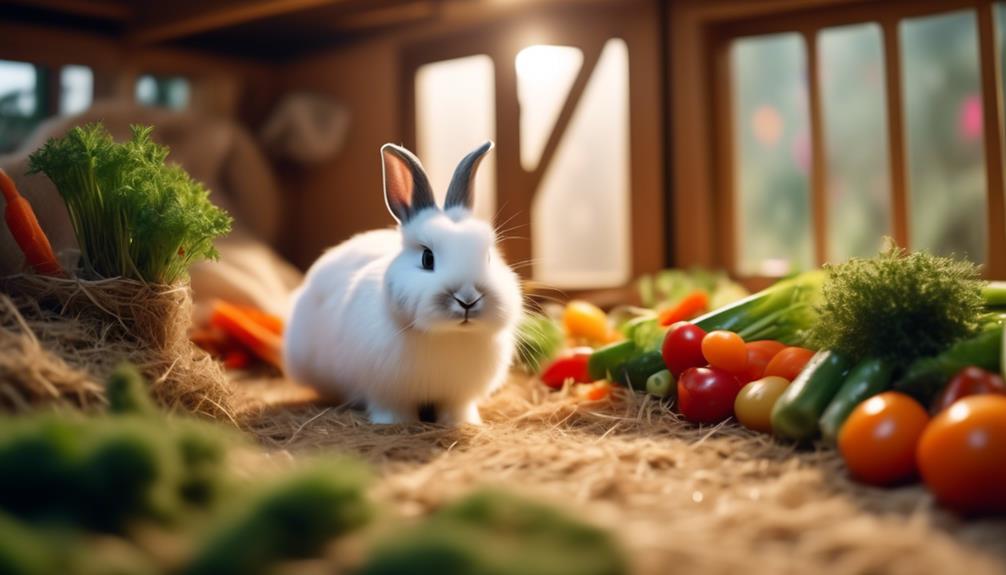
To properly care for your Dwarf Hotot rabbit, it’s important to provide them with suitable living conditions and a balanced diet.
They require a small cage with a solid bottom or rabbit-safe bedding, so it’s best to keep them indoors. The enclosure should be their designated ‘room’ while your home serves as their main habitat. Daily spot-cleaning and weekly complete bedding replacement are necessary to maintain cleanliness.
In terms of diet, their food should consist of 70% hay, a quarter cup of pellets per day, and rabbit-safe leafy greens, fruits, and vegetables. Remember to monitor their food intake to prevent overeating.
Cage and Housing
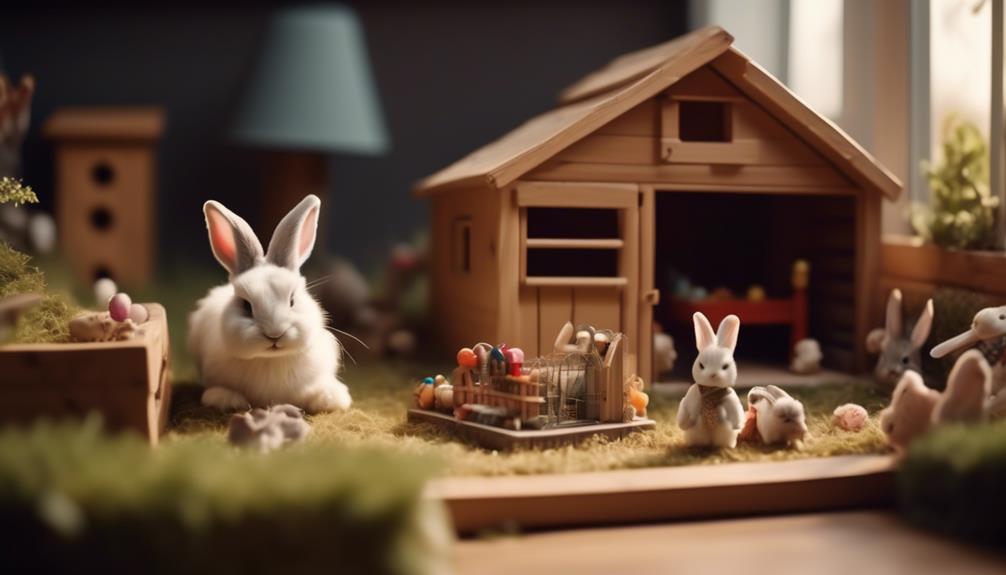
When setting up a suitable living environment for your Dwarf Hotot rabbit, it’s essential to consider their cage and housing needs. Here are four important factors to keep in mind:
- Size: Provide a spacious cage that allows your Dwarf Hotot rabbit to move around comfortably. The minimum recommended size is 4 square feet, but bigger is always better.
- Flooring: Opt for a solid bottom or use rabbit-safe bedding to ensure their comfort and prevent any injuries to their delicate feet.
- Ventilation: Ensure proper airflow in the cage to maintain a healthy environment for your rabbit. Good ventilation helps prevent respiratory issues.
- Safety: Make sure the cage is secure and free from any sharp edges or potential hazards. Consider adding hiding spots and toys to keep your rabbit entertained.
Indoor Vs. Outdoor Living
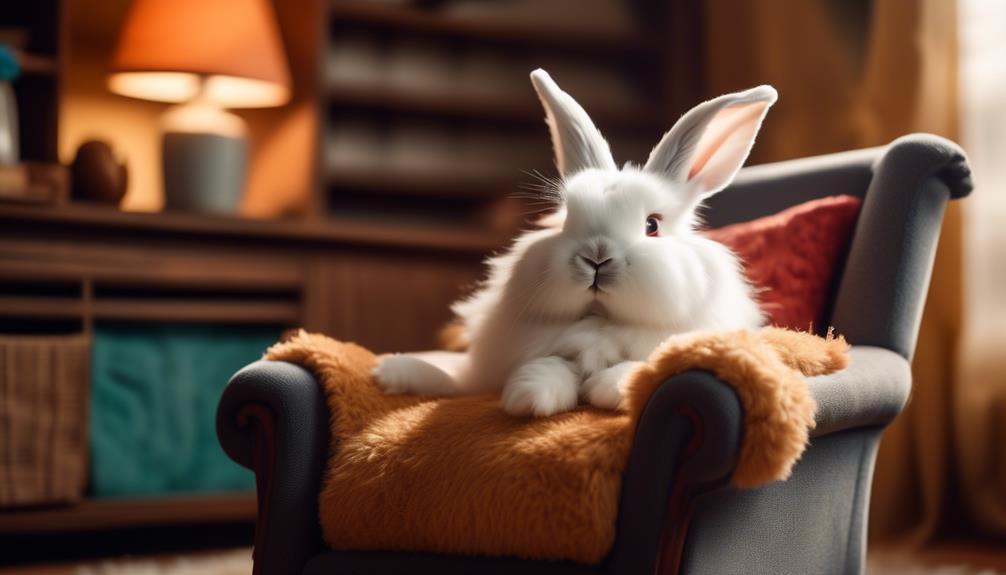
Considering the well-being and safety of your Dwarf Hotot rabbit, it’s important to make an informed decision about whether to keep them indoors or outdoors.
While it may be tempting to let your rabbit roam freely outside, it’s generally not recommended to keep Dwarf Hotots as outdoor rabbits. These compact and playful creatures are best suited for indoor living.
Indoor environments provide protection from predators, extreme weather conditions, and potential diseases. Additionally, keeping your rabbit indoors allows for easier monitoring of their diet, behavior, and overall health.
Creating a suitable and spacious enclosure, along with providing regular exercise and mental stimulation, will ensure that your Dwarf Hotot is happy and healthy in their indoor habitat.
Cleaning and Maintenance
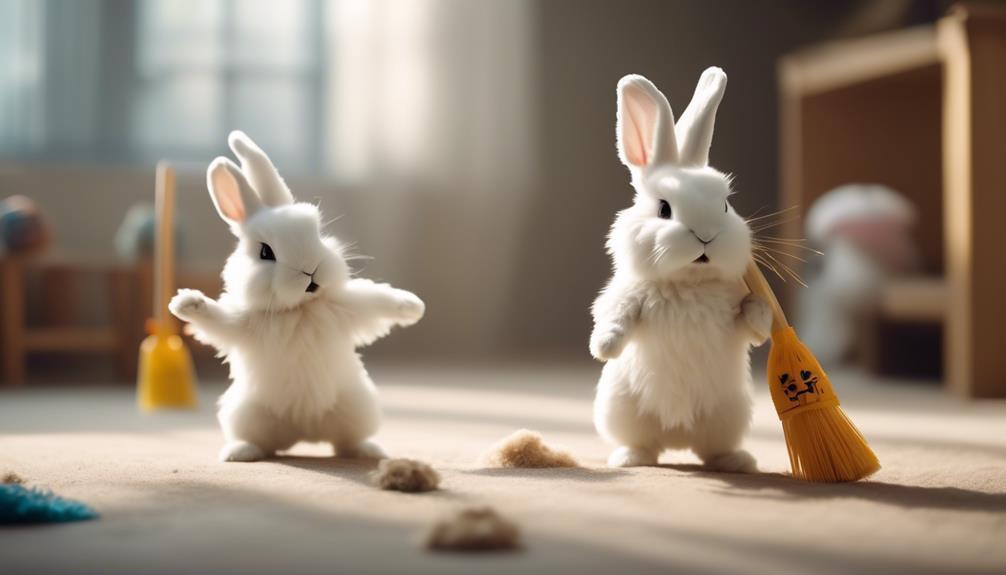
For the well-being and cleanliness of your Dwarf Hotot rabbit, it’s essential to establish a regular cleaning and maintenance routine. Here are four important tasks to include in your routine:
- Cage Cleaning: Regularly clean your rabbit’s cage to remove any droppings, soiled bedding, and uneaten food. Use a mild, rabbit-safe cleaner and rinse thoroughly to avoid any residue that could be harmful to your pet.
- Grooming: Brush your Dwarf Hotot rabbit regularly to remove loose fur and prevent matting. This is especially important during molting season when they shed more. Be gentle and use a soft brush to avoid hurting their sensitive skin.
- Nail Trimming: Trim your rabbit’s nails regularly to prevent them from becoming overgrown and causing discomfort or injury. Use a small animal nail clipper and be cautious not to cut too close to the quick, which can cause bleeding.
- Ear Cleaning: Check your rabbit’s ears regularly for any wax buildup or signs of infection. Use a damp cotton ball or a soft cloth to gently clean the outer part of their ears. Avoid inserting anything into the ear canal to prevent injury.
Diet and Nutrition
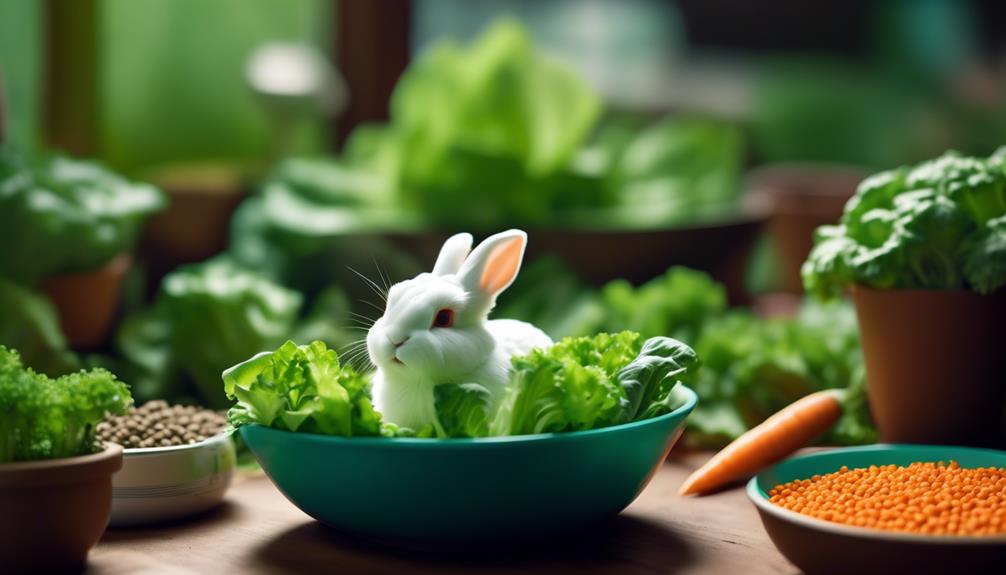
What should you feed your Dwarf Hotot rabbit to ensure proper diet and nutrition?
It’s important to provide your Dwarf Hotot rabbit with a balanced and nutritious diet. The main component of their diet should be hay, which should make up about 70% of their daily food intake. Hay helps to maintain their dental health and aids in digestion.
Additionally, they should be given a quarter cup of high-quality pellets per day. These pellets should be specifically formulated for rabbits and shouldn’t contain any added sugars or artificial additives.
Along with hay and pellets, you can also offer your Dwarf Hotot rabbit a variety of rabbit-safe leafy greens, fruits, and vegetables. It’s important to introduce new foods gradually and monitor their digestive health to avoid any potential issues.
Remember to always provide fresh water and consult with a veterinarian for specific dietary recommendations.
Frequently Asked Questions
Are Dwarf Hotot Rabbits Hypoallergenic?
Dwarf Hotot rabbits are not hypoallergenic. While they make great pets, they do have dander and can trigger allergies. It’s important to consider this if you or someone in your household has allergies.
How Often Do Dwarf Hotot Rabbits Need to Be Groomed?
Dwarf Hotot rabbits need to be groomed regularly. They have a short, dense coat that requires brushing, especially during molting season. Regular grooming helps prevent hair ingestion complications and keeps their coat healthy and shiny.
Can Dwarf Hotot Rabbits Be Litter Trained?
Yes, Dwarf Hotot rabbits can be litter trained. They are intelligent and can learn to use a litter box. Providing a designated area with appropriate litter and reinforcing positive behavior will help with training.
Are Dwarf Hotot Rabbits Good With Children?
Dwarf Hotot rabbits are great with children! They are playful, sweet, and quickly become attached to their human companions. Just make sure to supervise interactions and teach gentle handling for a safe and enjoyable experience.
Do Dwarf Hotot Rabbits Require Any Special Medical Care or Attention?
Dwarf Hotot rabbits don’t require any special medical care, but they do need regular check-ups with a rabbit-savvy veterinarian. Make sure to keep their living area clean and provide a balanced diet for their overall health.
What Makes Netherland Dwarf Rabbits a Good Pet Choice Compared to Dwarf Hotot Rabbits?
When considering a pet rabbit, an adorable Netherland Dwarf rabbit can be a great choice. They are known for their small size, gentle nature, and playful personality, making them ideal for families and individuals alike. Compared to Dwarf Hotot rabbits, Netherland Dwarf rabbits are often easier to handle and can adapt well to indoor living.
Conclusion
In conclusion, Dwarf Hotot rabbits are the perfect pet for those seeking an adorable and affectionate companion.
With their compact body shape, shiny coat, and captivating black rings around their eyes, these rabbits are sure to steal your heart.
Their playful and sweet nature makes them excellent companions, and their care requirements are manageable for both indoor and outdoor living.
Consider adding a Dwarf Hotot rabbit to your family for endless joy and cuddles.

